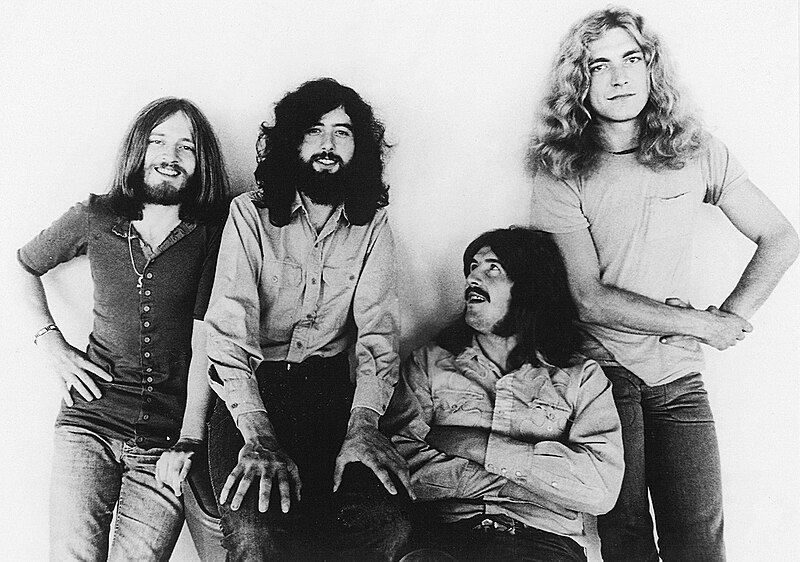What is Progressive Rock?
To paraphrase MasterClass’s excellent definition of the genre:
“Progressive rock, or ‘prog rock,” is a style of rock music characterized by its intricate compositions, experimental nature, and often conceptual lyrics. Bands typically utilize standard rock instrumentation—guitars, bass, drums, and keyboards—while incorporating elements from jazz and classical music. Lyrical themes frequently draw inspiration from literature, poetry, and historical events, contributing to the genre’s reputation for artistic ambition. Originating in the late 1960s, progressive rock continues to be performed and created by musicians today.”
My first introduction to progressive rock was, surprisingly, through a Pewdiepie video! If you remember the heyday of the “To Be Continued…” meme, the song featured was “Roundabout” by the legendary progressive rock band Yes. Of course, I was only 9 then (a bit too young to be watching a cussing Swede, don’t you think?), so I had no idea or interest in music in general. My first real exposure to the genre was via King Crimson’s “21st Century Schizoid Man”. During the COVID years, I was a Led Zeppelin fanatic, spending a lot of time online trying to convince myself that they were the greatest band of all time.
Somewhere along the line, I stumbled upon a video about the best debut albums. It featured the usual suspects – Guns N’ Roses, Boston, and Jimi Hendrix – but one album cover caught my eye: In the Court of the Crimson King by King Crimson. Intrigued, I decided to give it a listen, and the opening track (the aforementioned “Schizoid Man”) blew me away. I’ve been fascinated with progressive rock ever since, exploring various subgenres and even delving into heavy metal along the way.
Although the genre’s influence and popularity have waned since its peak in the 1970s, many progressive rock and metal bands continue to release exceptional albums and singles. For those unfamiliar with the genre, it can definitely feel overwhelming or difficult to approach. To make it more accessible, I have compiled a list of five critically acclaimed and universally beloved records from progressive rock’s golden era. For each, I will try to explain why the band was chosen and why the specific album represents their discography best, and provide two follow-up recommendations for further listening.
Kansas – Leftoverture (10/21/1976)

What makes Kansas unique?
While most people recognize Kansas from their monster hits such as “Carry On Wayward Son” and “Dust in the Wind,” few immediately classify them as a progressive rock band. Formed in Topeka, Kansas (what a surprise!) in 1973, the band rose to prominence in the latter half of the 70s thanks to the songwriting prowess of Steve Walsh and Kerry Livgren. Following a string of stellar records and international stardom, the band has undergone numerous lineup changes, experiencing varying degrees of success. However, with fresh talent reinvigorating their sound, they remain active and will be hitting the road for an American tour this summer.
Their music is uniquely American progressive, blending heartland honky tonk and classical influences to make some of the finest records to emerge from the States. The late Robby Steinhardt’s use of the violin as a lead instrument set them apart, while their collective creativity and technical excellence cemented their status as prog and classic rock legends. Their lasting presence on classic rock radio demonstrates their ability to balance complex arrangements with catchy hooks, giving them crossover appeal. And, of course, I had to include an American band on this list – after all, we can’t let the British and Canadians take all the credit!
Why is Leftoverture a good introduction to Kansas and recognized as a classic?
Leftoverture is the perfect introduction to Kansas because it embodies their finest traits. The album’s most famous track, “Carry On Wayward Son,” became a rock anthem with its soaring harmonies, intricate guitar work, and philosophical lyrics. It was even featured in “South Park”, for crying out loud. Songs like “The Wall” and “Miracles Out of Nowhere” showcase the band’s ability to mix symphonic elements with hard rock energy (and catchy choruses!), while “Opus Insert” and “Cheyenne Anthem” highlight their knack for storytelling and dynamic arrangements. The grand finale, “Magnum Opus,” is a multi-sectioned instrumental showcase that fully embraces their progressive tendencies, making it a standout for instrumental music lovers.
The album’s balance of accessibility and ambition offers radio-friendly hooks and intricate compositions. For those new to progressive rock, Leftoverture provides an engaging entry point with its mix of deep lyrics, melodic craftsmanship, and instrumental virtuosity. It remains one of the defining albums of American progressive rock and a must-hear for anyone even remotely interested in symphonic elements in Western music.

What should I listen to after Leftoverture?
The band must’ve loved creating portmanteaus, as their next album was titled Point of Know Return (1977). Kansas refined their blend of progressive rock and accessible songwriting, becoming their most commercially successful release, reaching number 4 on the Billboard Charts. “Dust in the Wind” stands out for its simplicity and introspective lyrics, becoming one of Kansas’ most famous songs and a must-learn for a beginner guitarist. Tracks such as “Closet Chronicles” show the band’s grand and symphonic side, with storytelling aspects reminiscent of their previous album. In short, Point of Know Return is a natural follow-up to Leftoverture.
Going back a few albums, their sophomore record, Song for America (1975), is another genre classic. As Steve Pettengill from Sea of Tranquility described it, it’s “Full tilt symphonic rock with none of the stadium rock numbers that would pop up on later albums. Comprising four lengthy, intricate pieces and two very American-style romps, Kansas’ second album very admirably showcases the band’s trademark duality as proggers and rockers.” The 10-minute title track, even in its 3-minute radio edit, displays the early magic of the progressive rock era of the band. Would highly recommend this record if you like longer instrumental sections and blissful vocal harmonies.
Genesis – Selling England by the Pound (28/9/1973)
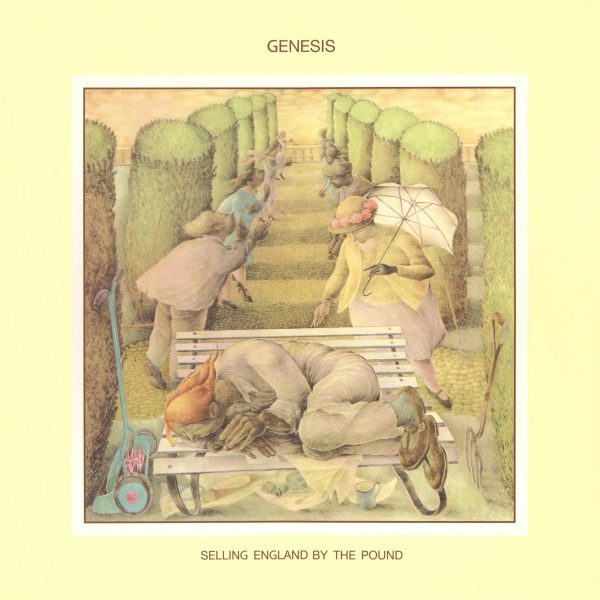
What makes Genesis’s music unique?
Formed in 1967 by high schoolers, the band (unwillingly) started their career as a Bee-Gees imitation, releasing their debut album From Genesis to Revelation (1969). After parting ways with their manager, Genesis explored the sonic possibilities of the new and exciting genre of progressive rock. The trio of original members, Tony Banks, Mike Rutherford, and Peter Gabriel, recruited drummer Phil Collins and lead guitarist Steve Hackett, marking a pivotal moment in prog rock history. The band released classic after classic records during this period, cementing them as one of the greats. After the departure of Gabriel and Hackett in 1975 and 1977, the three remaining members shifted towards more accessible songwriting, achieving immense success in the 1980s, most certainly helped by Phil Collins’ solo career and popularity. In 1997, Banks and Rutherford released their last studio album with vocalist Ray Wilson. The core trio reunited for two commercially successful tours in 2007 and 2021-2022.
While Genesis lacked overt virtuosos (compared to other technically brilliant freaks of nature at the time), their strength lay in their songwriting and compositional abilities. While bands like Yes (more on that later) and ELP dazzled their audiences with flashy solos and technical prowess, Genesis crafted intricate, multi-sectioned pieces that prioritized song structure and thematic cohesiveness over sheer instrumental showmanship. Banks’ lush, classically influenced keyboard arrangements, Hackett’s textural guitar work, and Collins’ fluid, jazz-tinged drumming created a rich sonic tapestry that allowed their music to be grandiose without relying on displays of technical dominance. This approach, combined with pastoral influences and 12-string guitars (not to mention Gabriel’s unique vocals), made the band a distinctly English, powerful force in the prog scene and beyond.
Why is Selling England by the Pound a good introduction to Genesis, and is considered a classic?
Released on the 28th of September, 1973, Selling England opens with the iconic a cappella intro of “Dancing With the Moonlit Knight”, a Mahavishnu Orchestra-influenced multi-sectioned composition. “I Know What I Like” hints at the band’s future aspirations as a hit machine with its catchy groove and whimsical lyrics. “Firth of Fifth” is chock-full of genius melodies, from the opening and recurring piano/keyboard theme to Steve Hackett’s exquisite guitar solo (and I do mean that). Tracks like “The Cinema Show” highlight the band’s musical prowess and chemistry, particularly in Banks’ sweeping keyboard work, Collins’ dynamic drumming, Rutherford’s 12-string magic, and Peter Gabriel’s poetic lyrics.
To be quite frank, any album from the 80s prog-pop Genesis is far more accessible than anything written in the 70s. You’ve most certainly heard “That’s All” or “Invisible Touch” on the radio or in the mall at some point, even if you didn’t know it was Genesis. Since this list is all about progressive rock, it became a matter of which album from 1970 to 1976 to choose. Although A Trick of the Tail and Wind and Wuthering are fantastic records in their own right (the former is my personal favorite), the Peter Gabriel-fronted albums are what cemented their legacy as prog legends. The balance between complexity and melody and the fact that it serves as a bridge between Genesis’s early, folk-influenced sound and the grander, progressive sound they would explore later makes Selling England a perfect introduction to the band’s music. The production is undoubtedly the best-sounding from the earlier records as well, so it makes for an easy listen.

What should I listen to after Selling England by the Pound?
You cannot go wrong with any of the 70s albums with Steve Hackett on lead guitar, but a great follow-up to Selling England by the Pound is A Trick of the Tail, released on 13 February 1976. Their first album with Phil Collins on lead vocals, the band was determined to prove they were still one of the best prog bands, even without charismatic frontman Peter Gabriel. Just over 51 minutes, with songs such as “Dance on a Volcano”, “Ripples…”, and “Los Endos”, it is the closest Genesis album to fit the definition of all-killer, no filler. I’m not exaggerating when I say every song is worthy of being on a Genesis greatest hits compilation.
You’ve got to hand it to Tony Banks and Mike Rutherford, the two founding members who were the primary songwriters who pushed for the pop sound to be implemented. Although there is a clear divide between prog-rock and prog-pop Genesis fans, there is one album they all agree is a classic. Duke came out in 1980 and bridges the gap between the two eras with short, catchy earworms (“Misunderstanding”, “Turn It on Again”) and long, complex instrumentals (“Duke’s Travels”/”Duke’s End”). An easy-to-digest pop-rock masterpiece!
Rush – Moving Pictures (2/12/1981)

What makes Rush unique?
Canadians are interesting people. They’re hockey fanatics, maple syrup junkies, and have produced some of the most famous and influential musicians in Western culture. Rush, formed in Toronto in 1968, is inarguably the greatest Canadian rock band, with its iconic lineup of Geddy Lee, Alex Lifeson, and Neil Peart. While they started as a Led Zeppelin clone, the band evolved over 19 studio albums, moving beyond the typical rock clichés with complex compositions and eclectic science fiction and philosophy-inspired lyrics (courtesy of Neil Peart).
With Lee’s distinct vocals and thunderous bass, Lifeson’s lightning-fast guitar work, and Peart’s explosive and revolutionary drumming/percussion, the band’s virtuosity is undeniable. Not many 3-piece bands can create a plethora of otherworldly sounds like the Holy Triumvirate. Though their complex, challenging music was far from radio-friendly (at first), their lasting legacy with 40 million records sold and a place in the Rock and Roll Hall of Fame has cemented them as progressive rock icons.
Why is Moving Pictures a good introduction to Rush and is considered a classic?
Moving Pictures features some of their most famous songs, including “Tom Sawyer”, a perfect blend of synths and hard rock (my favorite song to play along to as a professional air-drummer), and the brilliant “Limelight”, which offers introspective lyrics about fame and an excellent, emotive Lifeson solo. Tracks like “Red Barchetta” highlight Neil Peart’s storytelling ability, while the instrumental “YYZ” showcases the band’s technical prowess like no other track. Even 10-minute epics are welcome on this album, with “The Camera Eye” harkening back to their progressive, episodic compositions of the 70s. Each song presents a different side of Rush, whether it’s their lyrical depth, stellar musicianship, or ability to craft catchy hooks.
Like its predecessor, Permanent Waves (1980), the album embraced a more radio-friendly sound. Considered Rush’s magnum opus by many, it’s a refined collection of shorter, punchier songs that balance accessibility with the band’s signature complexity. Compared to their earlier work, Geddy Lee toned down his signature high-pitched shriek, while keyboards played a more textural yet prominent role. At its core, Moving Pictures maintained the raw power of the Holy Triumvirate, striking the perfect balance between new tech and classic dynamics. There will always be a never-ending debate on Rush’s finest record or era, but this particular album is undoubtedly the best starting point for anyone new to Rush’s music.

What should I listen to after Moving Pictures?
If you listened to Moving Pictures and loved the synth work, Grace Under Pressure (1984) is an amazing record. Directly pulled from Rush’s official website, “Largely considered one of the band’s darkest albums, Grace Under Pressure was influenced by the growing tensions in the Cold War in the 1980s. The album’s running theme is ‘pressure’ and how humans act under its influence. Despite the dark themes of the record, the band balances out influences from a lot of directions, including reggae and a harder feel of the classic hard rock sound.” Despite the absence of acoustic guitars and ballads, it is an excellent album with rhythmic ska influences and memorable choruses.
On the other hand, if the guitar-oriented tracks on Moving Pictures appealed to you more, A Farewell to Kings (1977) is another classic record. Although not as extreme as Hemispheres (I get depressed knowing I’ll never nail the guitar solo in “La Villa Strangiato”) and not as well-known as 2112, it features some of the most iconic Rush songs (the triumphant “Xanadu” and beautiful “Closer to the Heart”) and progressive epics (“Cygnus X-1 Book 1: The Voyage”). Together, it makes the album an essential listen for new Rush listeners and an intro to the progressive rock era of the greatest trio of all time (don’t @ me).
Pink Floyd – The Dark Side of the Moon (3/1/1973)
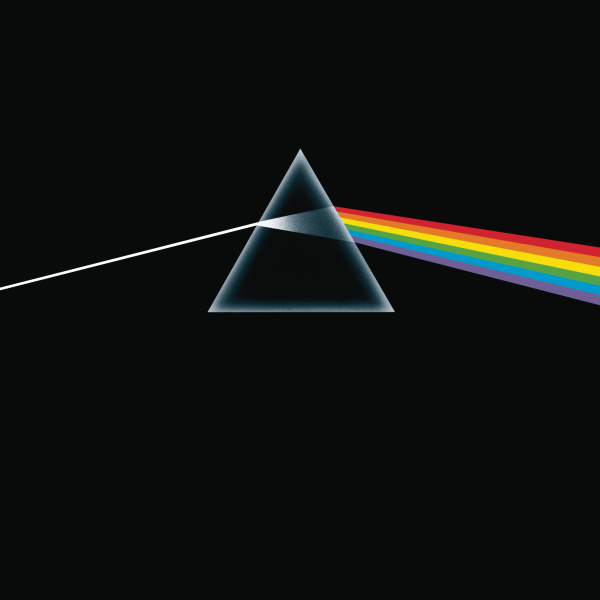
What makes Pink Floyd’s music unique?
This legendary English rock band needs no introduction, spoken with the same reverential awe as the Beatles and Led Zeppelin. They pioneered psychedelic rock in the late 1960s with the help of original frontman Syd Barrett, bringing a unique and whimsical touch that influenced the band’s experimentation years after his departure. Steadily changing their sound over time, the band gained worldwide success with their eighth studio album, The Dark Side of the Moon, in 1973 (more on that later). Releasing classic after classic, by 1985 tensions rose in the Pink Floyd camp and founding member Roger Waters left, leaving guitar virtuoso David Gilmour to take the reins of the band. With sparse releases throughout the decades, Pink Floyd’s reputation and popularity have not diminished, with millions of fans worldwide still actively discussing their music.
The band’s immense success is indisputable, concrete proof of progressive music having its moment in the sun. Unlike many bands, Pink Floyd focused heavily on album-wide themes rather than just individual songs, creating cohesive artistic statements with deep narratives. They incorporated spoken word passages, recorded conversations, and other unconventional sounds before they became widely used. Like a master painter with his brush, David Gilmour crafts exquisite melodies with his guitar, each note a stroke of color on a sonic canvas. His use of sustain, bending, and carefully structured solos creates an emotional depth that few guitarists can replicate. Roger Waters’ lyrics and voice often explore deep and philosophical themes, making their music both intellectually and emotionally compelling. With their long instrumental passages, odd time signatures, and dynamic shifts, it is undeniable that Pink Floyd is one of the greatest progressive rock bands of all time, so influential that they surpassed the genre itself in popularity.
Why is The Dark Side of the Moon a good introduction to Pink Floyd and recognized as a classic?
Q: How do you drive a Pink Floyd fan crazy?
A: That’s easy, just play The Dark Side of the Moon on shuffle.
The Dark Side of the Moon is consistently lauded as one of the pinnacles of music alongside the likes of Abbey Road and Thriller, and I can assure you, along with millions of others, that it lives up to the hype. You’ve almost certainly seen its legendary prism cover – designed by Hipgnosis – a symbol now etched into pop culture. Released on March 1, 1973, the album explores the full spectrum of the human experience: time, mortality, greed, madness, and the search for meaning. From the opening heartbeat of “Speak to Me” to the closing of “Eclipse”, it tells the story of life’s chaos and beauty. Musically, it blends progressive rock with jazz, psychedelia, and blues elements wrapped in a smooth, melodic sound that no audiophile or new fan can resist. With Gilmour’s emotive solos, Wright’s truly excellent array of sound textures, Mason’s carefully crafted percussion work, and Waters’ introspective lyrics and groovy bass playing, every band member shines in perfect synergy.
And how could we possibly forget guest vocalist Clare Torry’s haunting improvisations (imagine trying to cover “The Great Gig in the Sky” in karaoke!) and engineer Alan Parsons’ contributions to the groundbreaking production and mix? He pushed the studio technology of the early ‘70s to new heights, experimenting with the band with tape loops, synthesizers, and multi-track layering to create a listening experience that was as innovative as it was immersive. I like to think of the album as two side-long, 20-minute epics that happened to flow perfectly and create a 40-odd-minute masterpiece. Critically acclaimed and a massive commercial success, it topped the Billboard charts and famously remained there for an astonishing 741 weeks, over 14 years. For millions of fans, The Dark Side of the Moon is not just the crowning achievement of Pink Floyd’s career – it is a timeless piece of art that continues to resonate with society over half a century later, and I can’t say I disagree.
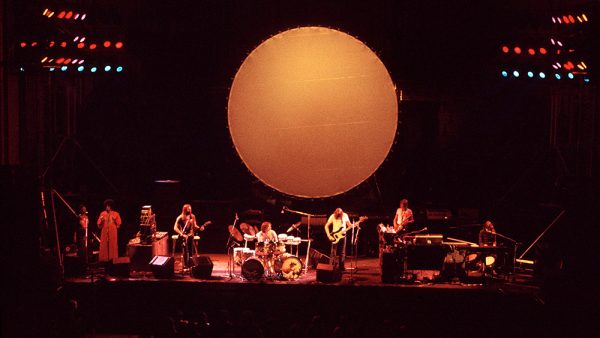
What should I listen to after The Dark Side of the Moon?
“Occam’s razor, or the principle of parsimony, tells us that the simplest, most elegant explanation is usually the one closest to the truth.” I think that idea applies to my choice of the two follow-up Pink Floyd albums. Wish You Were Here (1975) is yet another masterpiece, serving as a tribute to former band member Syd Barrett. With the 9-part suite “Shine on You Crazy Diamond”, a critique of the music industry in “Have a Cigar” and “Welcome to the Machine”, this album is filled with powerful messages and gorgeous synthwork from the late Richard Wright. And we can’t forget about the title track, which has become one of the staples of beginner guitarists and campfire songs.
And for the second record, I totally didn’t include this one because of David Gilmour’s exquisite guitar work, and it being my favorite Pink Floyd album. Animals (1977) is bookended with 2 short love songs (Pigs on the Wing, Part I and II), and three monstrous epics in the middle. Loosely based on George Orwell’s Animal Farm (well worth the read), “Dogs”, “Pigs (Three Different Ones)”, and “Sheep” describe different classes in society through thinly veiled lyrics and exquisite songwriting and composition. I can’t stress enough how great David Gilmour is on all these albums, and the rest of the members’ input isn’t too shabby either!
King Crimson – In the Court of the Crimson King (10/10/1969)
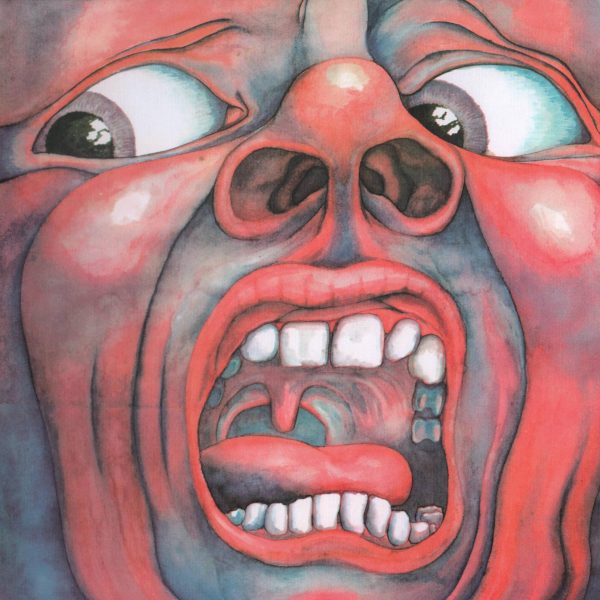
What makes King Crimson’s music unique?
While pinpointing a single “first” progressive rock band is subjective, King Crimson sure makes a strong claim for that title. Forming in late 1968, the original lineup of Robert Fripp, Michael Giles, Greg Lake, Ian McDonald, and Peter Sinfield only lasted for one album (and what an album it was) before imploding. The band then turned into a revolving door for the United Kingdom’s finest musicians for some time. As 1973 rolled in, the band (somewhat) stabilized for three classic albums, after which the first hiatus of King Crimson from 1974 to 1981 began. As the new decade began, they once again evolved and changed their sound into something almost completely unrecognizable yet familiar. After numerous lineup changes (and I do mean a lot), the band ceased activity after their last concert in Tokyo, 2021. They are now widely regarded as one of the greatest bands of all time, in terms of both innovativeness and authenticity.
Aside from their first two albums, In the Court of the Crimson King and In the Wake of Poseidon, no Crimson record is similar to another. The only constant throughout the band’s 50+ year history has been Robert Fripp, lead guitarist and primary songwriter. His choice of band members has widely influenced the sound of each incarnation of the band, creating a rich and varied listening experience. You can go from improvisational jazz to modernist classical proto-metal in the span of only one line-up change. Their continued use of eclectic scales and time signature choices has inspired countless bands for over 50 years to push the boundaries of recorded music and experiment without consequence (although I’m not sure if that’s always a good thing). In contrast to their peers throughout the decades, they constantly evolved, making them one of the true progressive rock bands.
Why is In the Court of the Crimson King highly regarded and recognized as a classic?
Released on October 10, 1969, In the Court of the Crimson King opens with the fiery opening track “21st Century Schizoid Man”. With the blend of heavy guitar riffs, robotically distorted vocals, and tasty sax solos, the song is considered both a proto-metal and prog classic. A stark contrast to the opening track, “I Talk to the Wind” is filled with delicate woodwind melodies and soft instrumentation. “Epitaph”, in my opinion, is the best track on the album, with gigantic mellotron swells and Sinfield’s emotional and deep lyrics. You even get a bit of free-form improv/space jam on “Moonchild”, and the album closes with the majestic title track.
While most groups here took at least one or two albums to hit their stride, King Crimson knocked it out of the park with an all-time classic debut.
Widely regarded as the first true progressive rock album, In the Court of the Crimson King stood out from the radio-friendly pop rock of its era, presenting instead an engrossing fusion of psychedelic rock, jazz, and classical symphonic music. Although songs like “Strawberry Fields Forever” by the Beatles and “Space Oddity” by David Bowie had used the mellotron, Fripp and McDonald fully utilized the extravagance and haunting nature of the instrument. Had they not released this album at the time, progressive rock might not even exist as we know it today. While The Dark Side of the Moon may be the most well-known example of progressive rock, In the Court of the Crimson King is undoubtedly the most influential prog album of all time, single-handedly inspiring other giants of the genre such as Yes and Genesis. This makes the groundbreaking record essential listening for anyone exploring the genre.

What should I listen to after In the Court of the Crimson King?
Their seventh and final studio album before a 7-year hiatus, Red (1974), rivals In the Court of the Crimson King in terms of quality and notoriety in King Crimson’s catalog. The album structure is quite similar, with three songs on side 1 and two songs on side 2. “Red” is a blistering instrumental opener, filled with heavily distorted sections and motifs. I could wax lyrical about “Starless” all day long, a fantastic closer and certainly one of the most acclaimed progressive rock compositions ever. Although not as well known, the rest of the album is as good as the two iconic tracks.
On the other hand, Discipline (1981) embraces the influence of new wave, minimalism, and polyrhythms, making it almost unrecognizable from the rest of the band’s catalogue of the 70s. In the Court… is lush, dramatic, and sometimes dreamlike, whereas Discipline is tight, intricate, and almost mathematical. If you’re a Talking Heads fan, this is Adrian Belew’s first album with Crimson! If their debut was the birth of progressive rock, this record is the rebirth of the then-disillusioned, waning genre. With classics such as “Frame by Frame”, “Thela Hun Ginjeet”, and the title track, it’s an album not to be missed!
Conclusion
This article is not meant to crown progressive rock as the greatest genre of all time, I don’t think any genre could truly claim that title. Music is possibly the most subjective art form ever created, and that’s the great thing about it! And, remember, this is only the tip of the iceberg. I have only skimmed the surface of a vast and ever-evolving genre, with artists still creating new and exciting music today. I recommend listening to these albums more than once to appreciate their depth and musicianship fully. Progressive rock is known for its ambitious compositions, extensive instrumental sections, and intricate song structures, which can take time to absorb and appreciate. The idea of an eight-minute introduction before the first lyrics (looking at you, Pink Floyd) might seem daunting at first, but with patience, the payoff can be incredibly rewarding.
I’m definitely not saying that this kind of depth is unique to only progressive rock. Everyone has their own taste and likes what they like, and I think that’s the beauty of all art forms, especially music. This isn’t a “Top 10 albums you must hear” article, it is merely a friendly invitation to discover and explore a genre you may not be familiar with. But that being said, I hope you’ll take the time to check out at least one of the albums listed. I cannot stress enough how much these artists mean to me, and I’m sure you have bands and musicians who mean the world to you as well. To wrap things up, I hope these albums will serve as excellent entry points into a genre that has captivated audiences for decades, including yours truly. Have a great spring break, Shorecrest!




